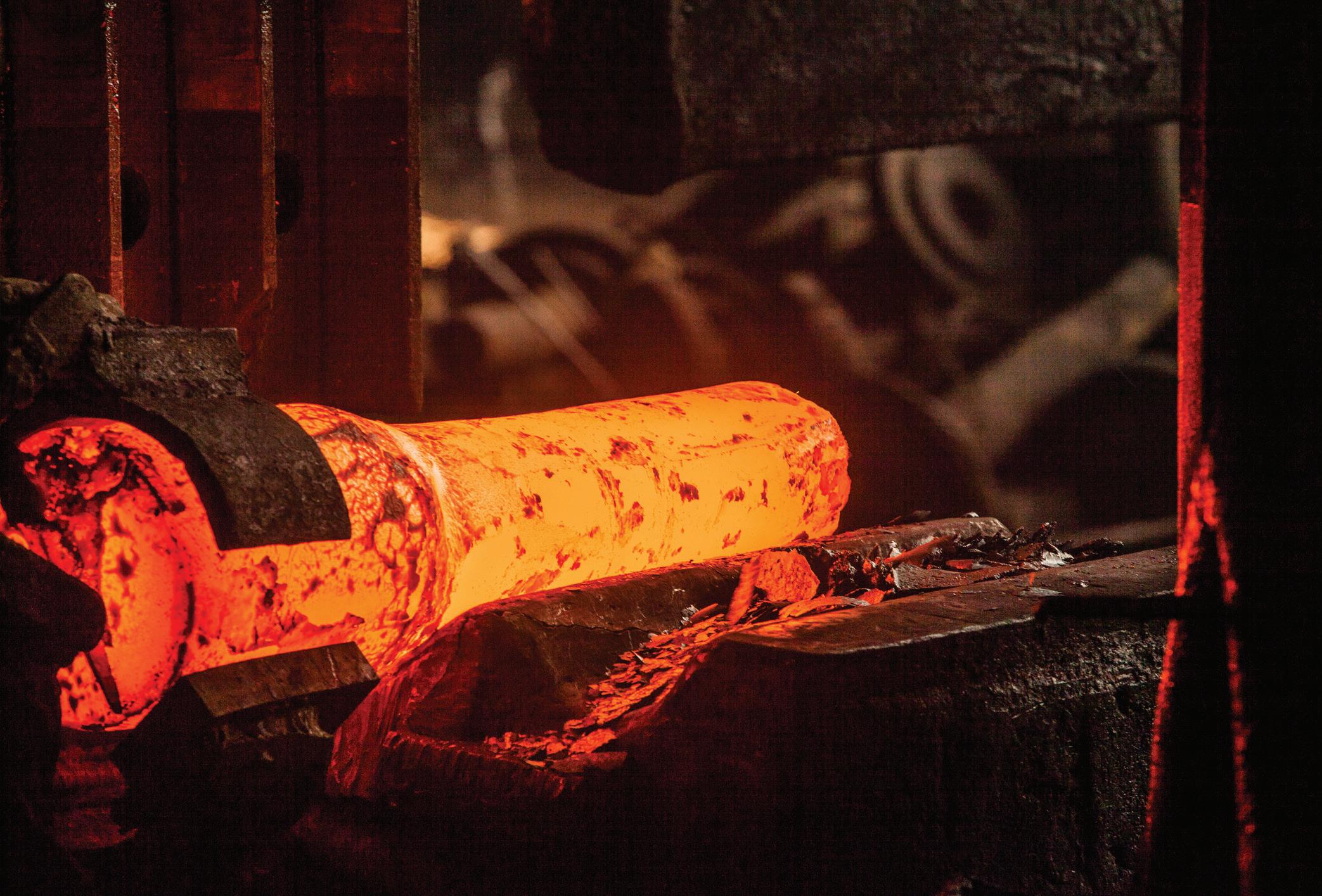
3 minute read
MATERIALS OUTLOOK
Today’s Steel Scene
By Royce Lowe
What might be called “the steel business” is going through not the best of times these days. Just a couple of years ago, the price of hot-rolled coil in the U.S. was headed for $2,000 per ton; today, it’s struggling to reach $1,000. The MEPS International World average hot-rolled coil price exceeded U.S. $1000 per ton in April for the first time since mid-2022, with prices varying across the countries surveyed.
Mills in the U.S. and Europe succeeded in hanging onto further price increases since mid-March. Shortages in domestic supply, together with modest restocking, supported these increases. But it is the general feeling that prices in both these regions have peaked in the present cycle.
U.S. and EU mills have announced price increases that got a negative reaction from many of their customers, who are looking instead for discounts during upcoming negotiations. Asian hot-rolled coil prices turned downwards in April due to weak demand and oversupply. These suppliers have been looking to push what they can’t sell at home into Western markets, where prices are considerably higher. The widening price differential between East and West is now making material from third countries increasingly attractive to buyers in North America and the EU, where sales from Asia fell to a low level in the fourth quarter of 2022.
Flat-product exports from Asia to North America remain substantially low, year-on-year, but they are increasing. Shipments from Asia to the EU are growing quickly, particularly for cold-rolled products, following production problems in Europe.
So it’s likely that increased exports to the West will put negative pressure on domestic prices in these markets. But MEPS feels that a crash in global steel prices is not in the cards in the near term due in part to higher raw material costs. In this, they may have some disagreements.
Meanwhile, according to Industry Week, there is something more upbeat coming from Cleveland-Cliffs, by way of its Chairman, President, and CEO, Lourenco Goncalves, an executive who speaks his mind. Cleveland-Cliffs takes in some one-third of its revenues from the U.S. auto industry and is the industry’s largest supplier. Goncalves says that the spot market has been “taken out of the picture in automotive” and that Cleveland-Cliffs and the major OEMs it sells to are now in “a true relationship type of thing.” Goncalves had a hunch late in 2022 that he would have leverage in contract talks with automotive companies. At that time, he said early negotiations suggested the supplier would be able to lift its prices nicely for 2023 as it looked to back away from steel indices and as OEMs look to meet continued strong consumer demand.
First-quarter average contract price increases of $115 per ton showed up as first-quarter direct sales to the auto sector totaling $1.9 billion, up from about $1.7 billion in Q4 of 2022 and $1.6 billion in 2022’s Q1. This helped the company limit its 2022 Q1 loss to $42 million. Cliffs’ CFO Celso Goncalves (the son) says the company’s average selling price should rise $120 per ton from Q1. This would entail higher price increases for cold-rolled and galvanized and would involve the supply of steel that is defect-free and will allow the fabrication of the automotive parts with no problem. The word used to describe supply by Cleveland-Cliffs is partnership. Sounds like a great idea, and makes sure the supplier knows what he needs to do to make his steel perform as it should. It should be noted that Cleveland-Cliffs was recently named a GM supplier of the year for the sixth straight year. Nucor, meanwhile, the other giant of the U.S. steel industry, is really upbeat, following excellent results in Q1 this year, showing $1.1 billion in profits on sales of $7.7 billion. Nucor’s chairman, President, and CEO, Leon Topalian, attributes his bullishness to the beginnings of a wave of orders for steel and related products to help build factories making semiconductors and EV batteries, as well as transportation and energy infrastructure projects. Topalian said passage of the Inflation Reduction Act, CHIPS and Science Act, and Infrastructure Investment and Jobs Act would require about 8 million tons of steelmaking capacity annually for the next decade. Steel Dynamics Inc. and Alcoa Corp. are in an equally bullish frame of mind.
Things are not that great on the stainless steel side of things. Although April is a traditionally slow month in Europe, this year saw very little buying for stock, and falling prices. In April, type 304 cold-rolled coil came in at 2707 euros per ton, the lowest for two years, with further decreases forecast. In North America, domestic steelmakers are offering extra discounts to entice orders for additional tonnage.

Orders are being placed reluctantly for the molybdenum-bearing grades through volatility in raw material prices. MEPS’ North American prices for type 316 cold-rolled fell by U.S. $505 per ton in April. Asia sees prices for molybdenum-bearing grades on a downward trend. Demand is down. Although not at the low levels seen a couple of years ago, the global steel market is in a state of uncertain volatility. The major players in the U.S. steel industry, however, are looking to a good year, and maybe several in sequence.
Author profile: Royce Lowe, Manufacturing Talk Radio, UK and EU International Correspondent, Contributing Writer, Manufacturing Outlook. n
JUNE 2023










